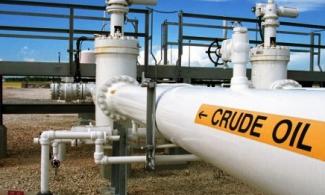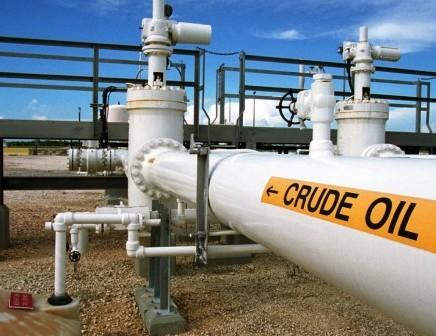
Since the Germans began drilling for bitumen in parts of the earth’s crust that make up the territory known as Nigeria in the beginnings of the 20th century, foreign interests have always held up the pillars of petroleum exploration around here
Since the Germans began drilling for bitumen in parts of the earth’s crust that make up the territory known as Nigeria in the beginnings of the 20th century, foreign interests have always held up the pillars of petroleum exploration around here.
In 1938, Royal Dutch Shel, a company of varying European nationalities, had a boundless license to search all of the 933,000 km of space named Nigeria for commercial quantities of crude oil.
In 1969, the government made steps to take control of what would become its single source of livelihood with the signing of the Petroleum Act. It followed this up with the creation of its own company in 1977.
Since the new company had little expertise of its own, it could not dislodge the foreign companies that had taken control of petroleum production in the country. So, the NNPC began signing Joint Operation Agreements (JOA) with the multinational oil companies. These agreements have taken different forms over the years.
The first form was called Joint Ventures (JV). JV’s meant the NNPC and the multinationals had entered into a union to jointly fund further exploration and production of hydrocarbons. As time passed, the guy who bankrolled the activities of the NNPC - the federal government, was growing insolvent.
They had no doubt heard or seen fleet-footed countries exploring the ocean bed for petroleum; their coffers were running dry; they needed to do like their seniors. Since they lacked the expertise and the money, they told the multinationals to source funds and search for oil in the shallow and deep depths of water that belongs to Nigeria. The type of JOA used to bind the Nigerian government and the multinationals is called Production Sharing Contract (PSC). That is the one Kachikwu has been complaining about since 2015.

Under this contract, the oil companies brought the funds and expertise to undertake the more technical off-shore exploration. If they found no fossil fuel in the course of their search, they went home empty. If they found oil in commercial quantity, they were sure to bag some profit. NNPC remained financially inactive until glistening drops of oil began to flow out.
NNPC owned the rights to the acreage; the oil companies were the contractors. Once negotiations are over, the multinationals start paying fees to the government. The first fee is the signature bonus. It might seem like the terms are too steep for the multinationals. On the contrary, they love the Production Sharing Contracts, because the first negotiated PSCs gave them more of the profit.
As offshore exploration became easier, the cost became cheaper. The PSC terms were toughened in 2000 and again in 2005. The turbulent years of 1993, ushered in the first batch of PSC licensed explorers. Eight companies were the first to venture into the risky structured search for oil. Each contract had a thirty-year lease.
Let us take a dive into the labyrinth of the Production Sharing Contract license in search of the loopholes the multinationals have been seemingly exploiting to ‘dupe’ the country.
In an article written for Sweetcrude Report, Energy lawyer, Noma Garrick, defined some of these features: Bonuses; These are fixed fees paid at certain times in the lifespan of the contract. Bonuses take two forms - Signature bonuses; Once negotiation over a contract has reached its conclusion and the contract has been signed; the contractor begins to pay a signature bonus. Production bonus - This payment is made when production level in a contracted exploration area reaches a particular point. Once production Begins, these payments come into enforcement: Royalty oil- The company gives to the NNPC, a volume of oil that is sufficient to pay for itself and the government corporation, a monthly royalty and a yearly rent. The rate of the royalty is determined inversely to water depth. As the depth increases, the royalty decreases. Section 5 of the Deep Offshore and Inland Basins Production Sharing Contract Decree 1999, gives the rates as; (a) In areas from 201 to 500 meters water depth 12% percent (b) From 501 to 800 meters water depth 8% percent (c) From 801 to 1000 meters water depth 4% percent (d) In areas in excess of 1000 meters depth 0% percent.
Royalty for inland basins is a flat rate of 10%. Cost recovery oil - After the royalty oil is paid, the explorer takes as much volume of petroleum as is required to foot its operating and capital cost. This is covered for in Section 8 of the Offshore Act. The operating cost is taken out in the year the expense was incurred, the capital expenditure is collected in equal installments over a five-year period. Tax oil - This is the quantity of oil allotted to the NNPC on behalf of itself and the contractor.
The taxable portion of the oil is the difference between the proceeds, let us say gross profit oil and the deductible cost of the entire project- let us say cost oil. The tax rate is a flat rate of 50%, to be split between NNPC and explorer in the same ratio of profit sharing.
When the payments stated above have been effected, the remaining portion is shared between NNPC and the contractor in the ratio agreed on in the contract. According to the Manager of Tax Administration in the NNPC during the Jonathan regime, the 1993 PSC, had a sharing formula of 80% to the explorer and 20% to NNPC.
Noma Garrick says the 1993 and 2000 models used cumulative production-level model for profit calculation. When the production level is low, the explorer gets more revenue. As the production level goes up, NNPC gets more revenue.
The 2005 model uses an R factor sliding scale technique. The total earnings accrued by the contractor is divided by the total expenditure. In the 1993 and 2000 models, oil price increases are not reflected in NNPC’s revenue. It is the reverse with the R Factor sliding scale. Section 16 of the Deep Offshore and Inland basin act, provides for the adjustment of PSC terms once the oil price goes above $20.
Management committee - In the running of a PSC license, a management committee made up of representatives of the government and representatives of the oil company. Nigeria is represented by NNPC subsidiary, Nigerian Petroleum Investment Management Service (NAPIMS). NNPC is the manager/operator of the license, the multinationals are the ones who run the license. They develop a work program, produce and finance the budget for its execution. The contracts can be terminated if agreed targets are not met.
National Interest Provision: The PSC license has clauses that secure technical transfer, skills acquisition and preference of local suppliers in accordance with the Local Content Act and the Petroleum Act.
Sore joints - Review of terms In 2015 the Minister of Petroleum had called the attention of the country to revenue losses he valued at $21 billion, traced back to the 1993 Production Sharing Contracts. Since then, words have continued to ring on the intent of government to review the 1993 PSCs.
In one of the Federal Executive Council meetings in December of 2017, Kachikwu received approval to start renegotiations. The Deep Offshore Act provides a triad of conditions under which the licenses can be renegotiated: 1. When the price of oil goes above $20 this happened in 2000. II. When discoveries soar above 500 million barrels per day, achieved in 2003. III. After 15 years of a license, that was in 2008 for the 1993 licenses and 2015 for the 2000 licenses.
Three years after Kachikwu’s initial alarm bells, no record of a review has been spewed out by the press.
The House of Representatives is expected to hold public hearing on the Petroleum Industry Fiscal Bill soon. One hoped the review of the bill will lead to amendment of the sections on royalty rates.
Nigeria is projected to spend $7.2 billion on ultra-deep offshore blocks between 2018 and 2020 according to data Intelligence firm- Global Data. One such field is almost or already in operation. This is the Total operated Egina offshore block. It is 1,500 meters deep. It has a projected production of 200,000 bpd. Kachikwu’s valuation on losses from PSC’s will triple if these licenses are not revised fast.